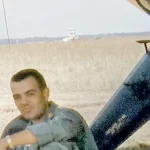Ever Wondered About the Origin of Mothers and Fathers Day?
The Makeup of Mother’s Day (Second Sunday in May)
A day known as Mothering Sunday actually began hundreds of years ago in medieval England. It was a homecoming of sorts, when extended families attended church services with their mothers on Laetare Sunday, the fourth Sunday of Lent. Many Brits still celebrate that day, but it has largely been replaced with the worldwide observation of Mother’s Day on the second Sunday of May.
The American version of Mother’s Day began in the early 20th century. In 1907, a woman in Grafton, West Virginia, planned an event to publicly recognize the efforts of her own mother who strove to promote the health and well-being of women in her community. The tradition of paying tribute to all mothers soon spread throughout the country. A national holiday was officially established in 1914 by President Woodrow Wilson, who proclaimed it to be a day to honor that “tender, gentle army — the mothers of America.” And so began the custom of wearing a carnation to honor mothers — a pink or red flower signified a mother who was alive while a white carnation would remember a mother who was deceased.
Honoring mothers has had a place throughout history. Ancient civilizations held festivals to revere the mother of their gods and goddesses. Even today, one of the most important holidays in Hindu tradition honors the goddess Durga, the mother of all that is good. A May Crowning has long been a tradition in Catholic churches in which a young child places a wreath of flowers atop a statue of the Virgin Mary, considered the mother of the church. Many organizations and societies hold receptions in honor of mothers, and some houses of worship ask mothers to stand and be recognized during their services.
In Charleston, the Greek Festival is celebrated each Mother’s Day weekend and is geared toward family fun. The Second Sunday on King Street coincides with Mother’s Day and offers another enjoyable option. And the College of Charleston traditionally holds its commencement ceremonies on Mother’s Day weekend. After all, what better way to celebrate mothers than an opportunity for her to preen over her child’s educational accomplishment?
The Foundation of Father’s Day (Third Sunday in June)
 Fathers aren’t left out of the equation, but their special day was a long time in coming. A year after the Grafton Mother’s Day was first observed, a day of remembrance was held in another West Virginia town after a mining accident left many fathers dead. The following year, a woman in Spokane, Washington, wanted to honor her father, a Civil War veteran who had raised his six children alone after their mother died. Local churches aided her efforts, and the tradition garnered nationwide support. But it didn’t officially become a national holiday until Congress passed a resolution just 50 years ago. Father’s Day is celebrated on the third Sunday in June. In keeping with tradition, a red rose is worn to acknowledge a father who is living, while a white one is worn to pay tribute to one who is deceased.
Fathers aren’t left out of the equation, but their special day was a long time in coming. A year after the Grafton Mother’s Day was first observed, a day of remembrance was held in another West Virginia town after a mining accident left many fathers dead. The following year, a woman in Spokane, Washington, wanted to honor her father, a Civil War veteran who had raised his six children alone after their mother died. Local churches aided her efforts, and the tradition garnered nationwide support. But it didn’t officially become a national holiday until Congress passed a resolution just 50 years ago. Father’s Day is celebrated on the third Sunday in June. In keeping with tradition, a red rose is worn to acknowledge a father who is living, while a white one is worn to pay tribute to one who is deceased.
So what do local dads like to do on Father’s Day? Many want to head out on the water. Typically, the beaches and boat landings are packed on Dad’s day. Maybe a kayak rental at Shem Creek or a charter sunset harbor cruise with the family appeals to some. Or Dad might prefer some time on the golf course, maybe with his adult children. And a cookout at home with the fam is always a winner. But truth be told, a little “me” time may just be what some dads want. One Mount Pleasant father of three preschoolers admitted, “A perfect Father’s Day starts with sleeping in and breakfast with the family. Grab a workout and go meet my fellow dads at Leon’s Oyster Shop or maybe Lewis Barbecue. Or maybe both! Then pick up a new video game and enjoy it in solitude before outside play time with the kids and grilling afterward.” Undoubtedly, some mothers may agree that a few hours of quiet time or pampering at a salon would enhance their special day.
In the 1930s, there was an attempt to do away with the separate holidays of Mother’s Day and Father’s Day and to replace them with Parents’ Day. It fell flat. So we still have these two special days to honor the people who have helped guide us to where we are now. And after all, don’t they deserve it?
By Mary Coy





Leave a Reply